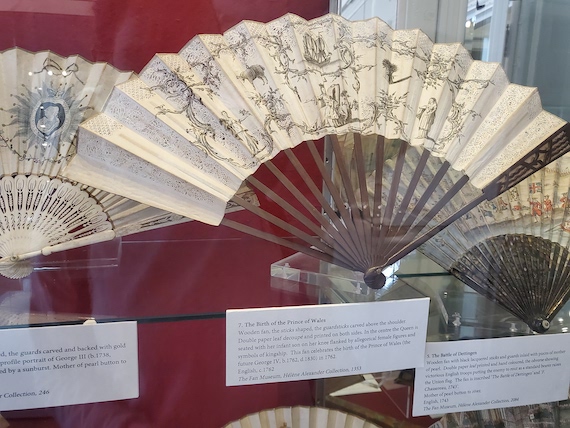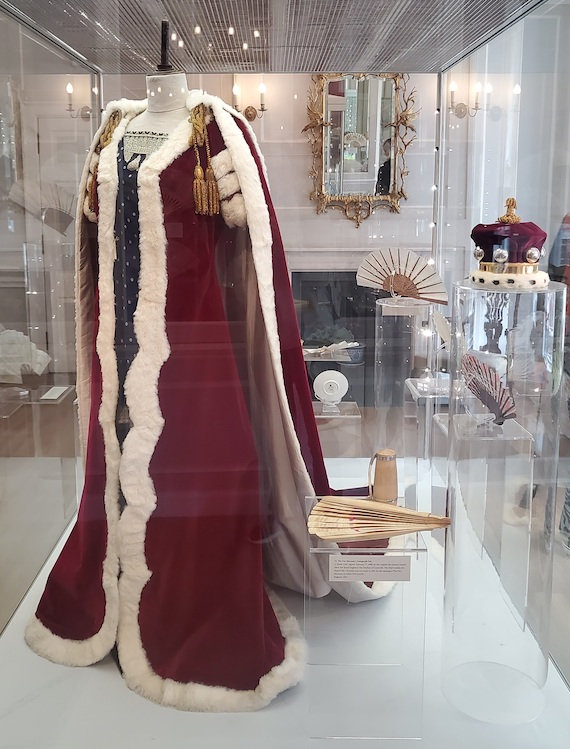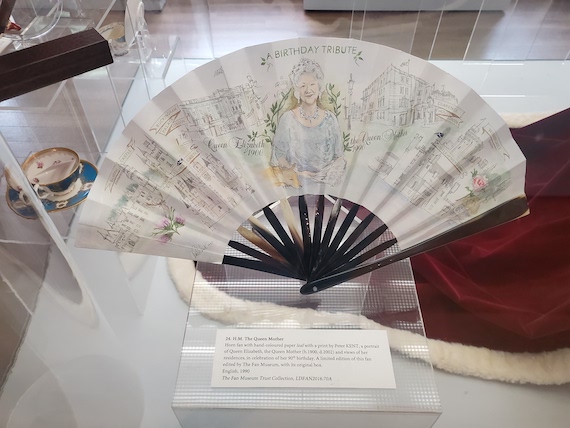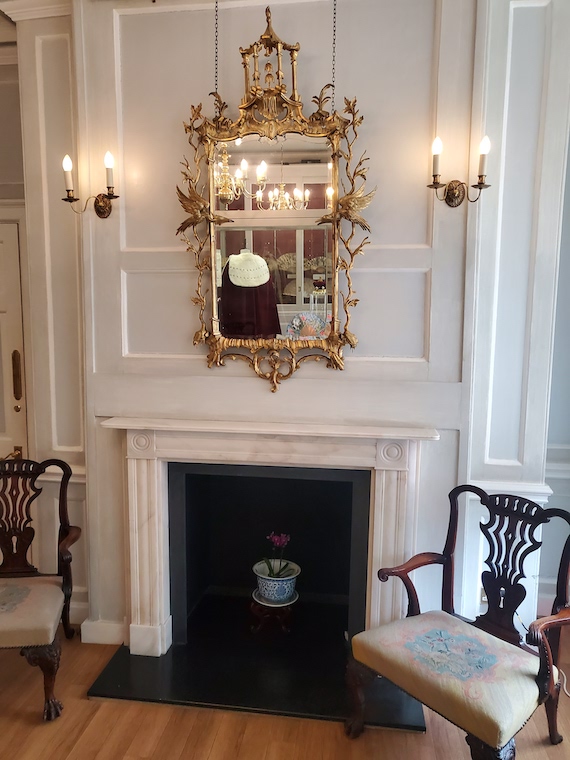The Fan Museum Review – spoiler – it’s lovely!
August 7, 2023I think that every visitor to London should go to the Fan Museum. That might sound like quite a bold statement, since, let’s get that pun out of the way, surely not everyone is such a great fan of fans. But the museum itself is so beautiful, the concept so niche, and its curators and staff so friendly and charming. Plus, and I know many people might see this as a minus, it’s so small. It’s a small, quirky, lovely local museum, that has been around since the 90s, and if it has stayed open thus far I want it to stay around quite a while longer.

Fan. Photo Genevieve Jones.
The fan is an object that I think most people are familiar with. I hope so, but I suddenly realised I shouldn’t assume. I’ve definitely seen them used more routinely in places like Spain, when on a packed bus in the heat there will be many people cooling themselves off this way. And you should try it, it’s very effective. Though in England, I do believe that most people think it’s a bit quirky and wouldn’t want to stand out by using one. It’s more associated with camp men and burlesque routines than practicality here, a bit of a throwback. Or is that just in my corner of the world?
Anyway, the Fan Museum is not here to persuade you that fans should be having a renaissance. It is a collection, founded by Hélène Alexander MBE (a world authority on fans) and her late husband, ‘Dickie’ A.V Alexander OBE in 1991.
The Fun of the Fan Museum
The downstairs room takes you through some of the history of fans and how they work. The oldest fans were more like flags, a stiff rectangle of paper mounted on a stick. Perhaps this is the origin of flag waving. There is a beautiful hand painted one here from the 1590s. It seems more akin to carrying a small painting around with you as a further adornment and advertisement of your wealth than an actual practical item, although apparently it would have rotated with flick of the wrist.
It also has some lovely novelty fans, such as one disguised as a pistol. But surely that should be the other way around? Wouldn’t you want your pistol disguised as an innocent looking item? Or is it for the very masculine man, who’s worried about carrying such a a traditionally famine item? Disguise it as a weapon, and no-one will know! Although if you went to get your fan out on a hot and crowded day in London and it looked like that, I’m sure you’d be tackled to the floor/shot dead before you could cool yourself.
Useful Fans
Slightly more innocuously, there is also a Victorian fan featuring an illustration of a man who sticks his tongue out when you pull the tab, while some ladies surround him looking confused. There’s an ivory fan with an inbuilt magnifying glass. There is also a hearing aid fan. Because it was such an everyday item in the past, and always carried around, I think there was always a bit of a temptation to think how it could be combined into other things too. A bit like keyring with a bottle opener on. Though I did not spot one of those – perhaps I’ve just invented a really useful summer picnic item? Cool yourself down while you drink beer? I’m off to the patent office directly. Soon I will be commemorated in the Fan Museum too!
The Birds and The Elephants
A more conventional way to deal with fans was as items of decoration. Of course they come in all kinds of colours, designs and materials. During the Victorian mania for the natural world, where they started to discover things like Dinosaurs and celebrate things like seaweed, they also celebrated nature in an odd way. They liked to wear it. I’m not talking about artificial flowers on hats, I mean whole birds on hats, and entire bird’s wings made into fans. Not just the wings but the head added, too.
Tortoiseshell was a natural choice for the struts of a fan, as was ivory, as they are both rigid, lightweight, and easy to shape and carve. Sometimes people went the whole hog and made the whole fan out of a complete slice of tortoiseshell or pieces of ivory. It is more usual to use paper, though. It’s even lighter, cheap and flexible.
Coronations and Celebrations at the Fan Museum

Coronation robe at the Fan Museum

The Queen Mum – For Fans. Photo Genevieve Jones
Upstairs is the current exhibition. “Coronations and Celebrations” is timed to be in keeping with the coronation of King Charles III. Of course, there were many fans made over the years to commemorate Royal events. I’ve always had a soft spot for the Queen Mum and I’m really glad to see a portrait of her here, rather younger-looking and perhaps more idealised than I’m used to, for her 90th birthday in 1990. They have also secured a coronation robe from 1953, worn by Lady Patience Margaret Latymer. It is scarlet velvet with white fur edging, and has appropriate gold tassels plus a cloak with train. There is also a somewhat gaudy mini-crown. I’m not sure if Lady Latymer was trying to pull focus from the Queen…
An Excuse to visit Greenwich, if one Were Needed

One of the rooms in the fan museum. Photo Genevieve Jones
The museum itself is housed in a beautiful Georgian house in the centre of Greenwich. The features are intact, with panelling, chandeliers and very ornate old mirrors. Rooms are painted in sunny yellow and aqua. It has an immaculate garden, and you can take fan-making classes in the conservatory. It’s only a fiver for general admission, so I suggest you go. And then you can spend the rest of day in the lovely atmosphere of this very old part of London, which, if you haven’t been, retains a great deal of its charm.


